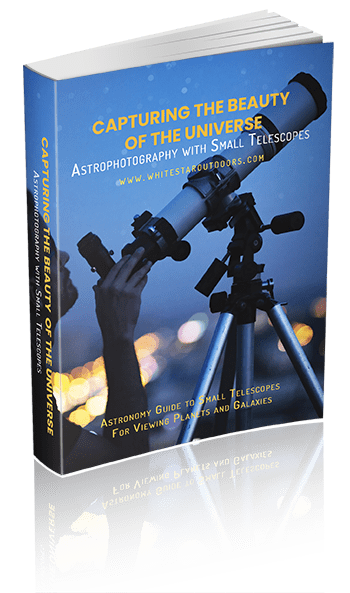How Light Pollution Affects Stargazing
The stars have captivated humanity for millennia, inspiring myths, scientific discoveries, and endless curiosity. Yet, as cities expand and artificial lights dominate the night, the ability to see the stars is fading at an alarming rate. Light pollution is a pressing issue that affects not only stargazing but also ecosystems and human well-being. Understanding how light pollution impacts our view of the cosmos is the first step toward reclaiming the night sky.
What Is Light Pollution?
Light pollution refers to the excessive or misdirected artificial light that brightens the night sky and reduces its natural darkness. Unlike air or water pollution, it is an often overlooked environmental issue, but its effects are profound. The main types of light pollution include:
- Skyglow: The bright haze over urban areas is caused by streetlights, billboards, and buildings.
- Glare: Intense light that creates discomfort or impairs visibility.
- Light Trespass: Unwanted light spilling into areas like homes or natural reserves.
- Clutter: Overcrowded and poorly designed lighting systems that amplify brightness unnecessarily.
For stargazers, skyglow is the most significant issue. It washes out the faint light of stars and other celestial objects, leaving only the brightest visible. In heavily polluted cities, even these can disappear, leaving the night sky a pale, featureless dome.
The Impact of Stargazing
Light pollution profoundly diminishes the experience of stargazing. In areas with severe pollution, the loss is stark-fewer than 20 stars may be visible to the naked eye, compared to thousands in dark-sky locations. This loss of visibility affects everyone, from casual stargazers to professional astronomers, and it’s a loss we can’t afford to ignore.
Telescopes, which amplify light to reveal distant objects, are also hindered by light pollution. The excess brightness creates glare and reduces contrast, making it challenging to observe faint objects like nebulae, galaxies, or meteor showers. For those eager to experience the full beauty of the cosmos, escaping light pollution is essential.
The Science Behind the Night Sky’s Fading
Stars and other celestial objects emit light that has traveled millions or even billions of years to reach Earth. Light pollution competes with this faint light, scattering artificial brightness into the atmosphere and overpowering the starlight. The result is a sky where only the Moon, planets, and a few of the brightest stars remain visible.
Astronomers use a system called the Bortle Scale to measure the darkness of the night sky. This scale ranges from Class 1, which represents the darkest skies on Earth, to Class 9, which corresponds to heavily light-polluted city centers. Stargazing is most rewarding in areas with a Bortle Class of 4 or lower, where the Milky Way can still be seen.
<img class=”aligncenter wp-image-2214 size-large” src=”http://whitestaroutdoors.com/wp-content/uploads/2022/12/Light-Pollution-Filters-1024×536.jpg” alt=”light pollution affects stargazing
” width=”1024″ height=”536″/>
How Light Pollution Affects Ecosystems
The effects of light pollution extend beyond stargazing. Many species, from insects to sea turtles, rely on natural darkness for survival. Artificial light disrupts their behaviors, such as navigation, feeding, and reproduction. For example, baby sea turtles use the reflection of moonlight on the ocean to find their way to the water. Artificial lights can disorient them, leading them away from safety.
Migratory birds are also impacted, as they use the stars for navigation. Bright city lights can confuse them, causing collisions with buildings or altering their migration routes. By addressing light pollution, we not only restore the beauty of the night sky but also protect countless species.
The Effects on Human Health
Humans are not immune to the effects of light pollution. Exposure to artificial light at night disrupts the production of melatonin, a hormone that regulates sleep. This disruption can lead to insomnia, fatigue, and even more severe health issues over time. Restoring natural darkness has benefits for mental and physical health, providing deeper sleep and a greater sense of connection to nature.
Restoring the Night Sky: What You Can Do
Reclaiming the stars requires a collective effort, but remember, every individual can make a difference. By taking meaningful steps to combat light pollution, you’re not just making a personal choice; you’re contributing to a global solution.
- Use Shielded Lighting: Install fixtures that direct light downward rather than allowing it to spread outward or upward.
- Opt for Warm Lights: Use bulbs with a lower color temperature to reduce the harshness of artificial light.
- Turn Off Unnecessary Lights: Make a habit of turning off outdoor lights when they aren’t needed, especially during peak stargazing hours.
- Advocate for Dark-Sky Reserves: Support local and global efforts to create protected areas where natural darkness is preserved.
Organizations like the International Dark-Sky Association (IDA) work to raise awareness and promote solutions to reduce light pollution. For stargazers, visiting dark-sky reserves can provide a glimpse of the unspoiled night sky and inspire action to protect it.
Top Dark-Sky Locations for Stargazing
For those ready to escape light pollution, dark-sky reserves and remote areas offer a chance to reconnect with the cosmos. Some of the best locations include:
- Cherry Springs State Park, USA: Renowned for its pristine skies, it’s a favorite among astrophotographers.
- Aoraki Mackenzie International Dark Sky Reserve, New Zealand: Offers stunning views of the Southern Hemisphere’s stars.
- NamibRand Nature Reserve, Namibia: A desert haven where the Milky Way shines brilliantly.
With the right equipment from High Point Scientific, these destinations become even more rewarding for both beginners and experienced stargazers.
The Role of Telescopes and Accessories
While light pollution poses challenges, telescopes, and filters can help mitigate its effects. Telescopes designed for urban stargazing often include features like light pollution filters, which block unwanted wavelengths while preserving the visibility of celestial objects. For those observing from suburban or light-polluted areas, accessories like these can make a significant difference.
Explore a range of telescopes and filters at High Point Scientific to enhance your stargazing experience, even in less-than-ideal conditions.
Conclusion: Saving the Stars for Future Generations
Light pollution affects stargazing as a reversible problem. By taking steps to reduce unnecessary artificial light and supporting dark-sky initiatives, we can restore the beauty of the night sky for future generations. Stargazing is more than a hobby; it’s a connection to the universe and a reminder of our place within it.
Whether you’re a seasoned astronomer or a casual observer, the tools to combat light pollution and enhance your view of the stars are within reach. Visit High Point Scientific to find telescopes, filters, and accessories that bring the cosmos closer, even under challenging skies. Together, we can ensure that the stars remain a source of wonder and inspiration for all.


